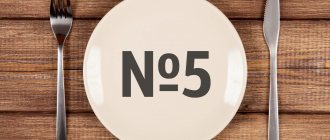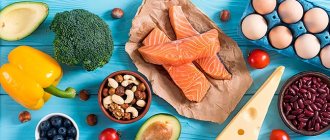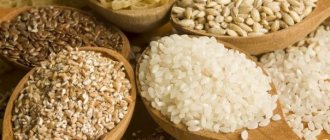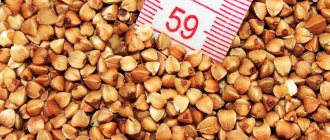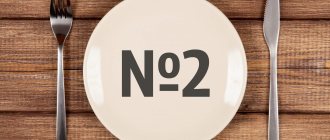Partial fasting prevents aging. The starving person is transferred from adulthood to the initial post-embryonic state, he is almost born again.
Herbert McGolfin Shelton
There are contraindications, consultation with a specialist is required
Therapeutic fasting, intermittent fasting, fasting, ketosis, autophagy, fasting, switching to one meal a day - recently information about these concepts is increasingly found on the Internet. Intermittent fasting is a refusal to eat for a certain period of time in a day (for example, 16 hours is a food break, 8 hours is a window for several meals).
There is an opinion that such fasting is the most natural way of nutrition for humans, a kind of return to primitive times, when our ancestors did not have constant access to food and periods of fasting were the norm. It is increasingly said that all diets (including the lowest-calorie ones) and severe dietary restrictions have short-term results and are ineffective. It is more positive to adhere to proper nutrition with the inclusion of a large amount of vegetables, fruits and herbs in the diet with a food break.
Intermittent fasting - what is it?
The 16/8 diet is one of the most popular weight loss methods among women. It is based on 16 consecutive hours of fasting and 8 hours of eating with almost no restrictions. The main thing is to observe intervals.
Within 8 hours you are allowed to eat your entire daily food allowance. You need to understand that nutrition should consist of healthy foods. For the next 16 hours of fasting, you can drink only pure water, herbal tea, coffee without milk and sugar. All this helps speed up metabolism and remove toxins. Alcohol is allowed only in moderation.
This diet should be followed for no more than 2 weeks.
What is it: a brief summary of the process
Intermittent fasting (aka PG, aka intermittent fasting (IG), aka Intermittent Fasting (or IF), aka Alternate day fasting, etc.) is a strategy for managing the timing of nutrients entering the human body, which globally consists of two stages :
- You don't eat for a certain period (~12-48 hours).
- You eat over a certain period (~8-24 hours), it is during this period that you eat your daily calories based on your goals (weight loss/maintenance/gain).
There are several versions of PG, but they all share a common principle: a period of hunger and a period of feeding (or feeding window).
This nutritional system has become especially popular after 2021, in which a Japanese scientist received the Nobel Prize for (as many thought) proving that autophagy cleanses the body and is triggered by hunger. Let's dispel myths and misconceptions!
The benefits and harms of intermittent fasting
Before starting a diet, you need to understand its basis, understand its benefits and harms. As a result of large-scale studies, it was found that such weight loss is effective and safe for people suffering from obesity. But you need to understand that only healthy men and women, without chronic diseases and contraindications, can go on a fasting diet.
The founders of the fasting diet believe that it is beneficial for the whole body. As a result of reducing calorie intake, fat consumption begins, and muscle mass is preserved. Sugar levels return to normal, blood pressure stabilizes, immunity is strengthened, toxins are released, overall health improves and the body feels light.
Interesting! Basic rules for getting rid of belly fat at home
There are also possible side effects in the form of headaches, malaise, indigestion, constipation, drowsiness, irritability, and abdominal cramps. Fasting and refusing to eat for such a period is stressful for our body; we need to be careful and not break down, otherwise fasting can turn into impulsive overeating. If you have problems with the perception of food or you “eat” your emotions, the fasting diet is definitely not for you.
Interesting facts about fasting
- John Lenon, musician and singer, specifically fasted while writing songs.
- The human body needs only 100-200 grams of its own fat reserves to provide itself with daily energy requirements.
- The body contains a reserve of trace elements and salts, which would be enough for several months of existence.
- The world record for not eating solid food is 382 days.
Who is the weight loss method suitable for?
Intermittent fasting is chosen by those who suffer from excess weight and obesity. This diet is most suitable for people with good willpower, those who know how to follow a regimen and combine it with other activities. The best results will be obtained by people who play sports and lead an active lifestyle. 16/8 intermittent fasting is intended for healthy people without acute or chronic illness.
During fasting, sensitivity to insulin increases, thereby eliminating insulin resistance, which leads to the development of obesity and diabetes. Therefore, intermittent fasting is chosen by people who want to lose weight.
Quitting the diet
Exiting a fasting diet should be gradual for several reasons:
- After a long fast, the digestive system is not ready to eat fatty and high-calorie foods.
- If you allow overeating, the lost weight will return within a few days, and then there is a risk of increasing it to values exceeding the starting weight before starting the diet.
Therefore, it is necessary to provide for a smooth return to the standard diet, with an adaptation period. It should last no less than the period that the weight loss course lasted. How this period passes directly determines whether it will be possible to maintain the results obtained during fasting.
After a fasting diet, all substances in foods are absorbed to a greater extent, so you need to prepare for the fact that the portions will have to be reduced in comparison with those that were usual before.
Exiting the diet occurs in several stages:
- First of all, the calorie content of the diet is increased by introducing an additional 100 g of boiled fish to ensure the replenishment of polyunsaturated acids and important minerals. At this time, you can also drink diluted freshly squeezed fruit or fruit and vegetable juices.
- From the second day you need to add a glass of biokefir before bed.
- On the third day, you can introduce more vegetable dishes, raw or stewed. You can also indulge in lightly salted water porridge with olive oil.
- On the fourth day, 1 serving of meat without fat is allowed, preferably boiled or baked.
If at any stage of exit you feel discomfort in the stomach or intestines, then you need to stay on the same diet for several days and only then continue to introduce new ingredients.
After you finish losing weight, you need to try to maintain a balanced diet and ensure sufficient physical activity.
Basic principles of 16/8 intermittent fasting
Before starting the diet, you need to learn the basic principles of 16/8 intermittent fasting for women:
- within 8 hours you need to eat three times;
- you need to adhere to your own calorie intake per day;
- refrain from fatty and salty foods, fast food and sweets, bakery and confectionery products;
- be sure to drink at least 1.5-2 liters of water per day;
- you need to eat more fruits and vegetables, in between meals;
- It is advisable to play sports to achieve the best effect;
- It is better to do sports on an empty stomach.
Authorized Products
The list of such should include:
Table 2.
| What can be consumed without restrictions: | Boiled chicken, turkey, veal or beef will also work. Provided that the meat is steamed. Stewed vegetables or baked in the oven. Porridges and soups, mostly pureed. You can eat rice, buckwheat, and wheat porridge. |
| In small quantities: | A little dried bread is allowed, literally a few pieces a day. Low-fat fermented milk products: natural yogurt, kefir. Weak tea without sugar. |
You can diversify your diet with fruits, which are easily digested and are regarded as an accessible source of vitamins and beneficial elements. The diet should be balanced, complete, exclude large amounts of glucose; light carbohydrates, which provoke the production of insulin in the body, are also prohibited.
How to eat properly during 16/8 intermittent fasting for women
For the effect to be impressive, women need to adhere to the principles of intermittent fasting, as well as follow the rules of nutrition. You need to understand that you can get the desired result only with a healthy diet and physical activity.
Proper nutrition consists of a significant amount of vegetables and fruits, healthy fats, nuts, foods high in protein and fiber. During the diet, you need to forget about fast food and sweets, fatty foods and bread. These foods will only hinder your weight loss. And if you are hungry, it is better to drink more water.
During a sixteen-hour fast, you can only drink water, unsweetened tea and coffee without sugar. Sugary carbonated drinks and juices are prohibited. And if you want to drink alcohol during the diet, only a small amount is allowed.
Authorized Products
During the diet, you need to pay special attention to nutrition. It is important to include foods with sufficient protein in your diet, such as chicken and quail eggs, chicken, beef, turkey, cheese, cottage cheese, mushrooms, nuts, beans, peas, lentils and lean fish.
Healthy fats are required, their sources: butter and vegetable oil, sour cream, kefir, dark chocolate, cheese, herring, salmon, saury, pork, lamb.
It is also recommended to pay attention to products containing complex carbohydrates: dried apricots, raisins, prunes, marshmallows, marmalade, marshmallows, berries, fruits, vegetables, pasta, cereals.
List of prohibited products
During intermittent fasting, the following foods are strictly prohibited:
- Carbonated sweet drinks and kvass. Diet drinks are also prohibited - they contain a huge amount of sugar, which oversaturates our body.
- Juices. Almost all juices on store shelves contain preservatives; their usefulness is close to zero. If you want to drink juice, you need to make it yourself and drink it the same day.
- Energy and protein bars. Such sweets are almost no different from regular chocolate ones; they also contain a lot of preservatives and sugar, despite the protein and fiber content. If you really want it, it’s better to eat natural nuts.
- Products that contain corn syrup, fructose or sucrose. Eating foods with these ingredients spikes your blood sugar levels and can lead to huge health problems, including diabetes.
- Breakfast cereals. They contain a significant amount of sugar. Only those with no more than 5 g of sugar are acceptable.
- Chips, crackers. May cause exacerbation of gastritis and obesity.
Advantages and disadvantages
This type of weight loss is resorted to in cases where other diets are disappointing and do not give the desired result.
With obesity, many people pursue the goal of losing weight as quickly as possible. But you need to wisely weigh the pros and cons before going on a starvation diet, so as not to break prematurely and eliminate possible negative consequences.
pros
- High performance. The weight per week is at least 7 kg, and if there is a lot of excess weight at the start - up to 10 kg or more. It is for this parameter that the starvation diet has few competitors among other weight correction systems.
- Due to a decrease in food intake, active processes of purification from slag and toxic accumulations begin in the body.
- The costs of purchasing products for such a diet are significantly reduced, since all the products present in the diet are cheap and can be easily purchased in any supermarket.
- The time spent preparing food is significantly reduced, which eliminates the need to spend evenings in the kitchen and frees up time for relaxation.
Minuses
- A strong feeling of hunger will accompany the entire process of losing weight, and sometimes this can make it difficult to fall asleep.
- The body experiences stress from an acute lack of vitamins and minerals.
- The entire course is accompanied by drowsiness, dizziness, fatigue, and the psycho-emotional state due to severe hunger may be poor.
- With such a significant weight loss result, the skin almost always becomes flabby due to the rapid loss of subcutaneous fat and a decrease in body volume.
- After completely stopping the course, the previous weight returns quite quickly, and if you do not control the portion size, it can even exceed what it was at the beginning.
How to prepare for fasting
You can’t suddenly start fasting; you need to prepare your body, otherwise stress and breakdown are inevitable. It is advisable to prepare in advance for fasting. In about two weeks, you need to start reducing the daily amount of calories: to start by 10-15%, and then gradually reduce further.
Tips for preparing for fasting:
- It is recommended to start keeping a food diary, which will list your entire diet with calorie calculations.
- Calculate your personal optimal ratio of proteins, fats and carbohydrates and plan your diet taking this into account.
- At the preparatory stage, reduce the amount of sweets, fatty foods and semi-finished products consumed.
- Start adding physical activity little by little if you haven’t already. You can increase the daily number of steps taken, or start strength training or cardio training.
- Start drinking more water, at least 1.5-2 liters per day.
- Choose the time that suits you best.
Scientific background
The principle of action of the diet is based on the mechanisms of autophagy described by microbiologist Yoshinori Ohsumi. Translated from Greek, the term “autophagy” means “self-eating.” This is a natural process in which living cells recycle components of themselves. Thus, they maintain their vitality or acquire new properties.
The phenomenon has been known since the 60s of the 20th century, but its mechanism was revealed in detail only half a century later. For his description of the principles of autophagy, Yoshinori Ohsumi was awarded the Nobel Prize in Physiology or Medicine in 2021.
The scientist has proven that self-recycling of excess cell parts (which include toxins, defective proteins, infectious agents) has a positive effect on the condition of the entire organism.
Autophagy affects the body in the following ways:
- slows down the aging process,
- strengthens the immune system,
- normalizes the functioning of organs.
In simple words, cells, digesting unnecessary parts of themselves, are renewed.
Thanks to this, the whole body feels better. One way to activate the autophagy process is to reduce the amount of calories consumed.
16/8 Intermittent Fasting Plan for Beginners
Often, with intermittent fasting, the eating period is chosen from 12 noon to 8 pm. This is the best option: you just need to skip breakfast, and the night will pass as usual. And after noon, you can calmly eat a full lunch and dinner, and you can have a snack in between.
Interesting! 15 Best Exercises to Lose Back Fat
Some people prefer the period from 9 am to 5 pm. It is convenient for them to have a full breakfast and lunch, and after 5 pm they don’t eat at all.
If you are just starting to get acquainted with fasting, it is recommended to try both options.
Nutrition during intermittent fasting should be balanced. You need full meals, there may be several of them, as well as snacks. The main thing is to follow all the principles and rules of intermittent fasting 16/8, and the schemes may already be different.
How to fast correctly: analysis of schemes and protocols
- Alternate day fasting (ADF) 36 12 - every other day (36 hungry/12 fed hours).
With this plan, you eat every other day. So, for example, on Monday you eat from 8 am to 8 pm. Then you fast overnight and Tuesday. Again, eat from 8 am to 8 pm on Wednesday and fast overnight and Thursday. And so on. On the day of food consumption, it is recommended to select “healthy” foods and eat what you want.
- Meal-skipping - random skipping of meals.
Some proponents of GHG believe that it is necessary to act according to evolutionary principles. Exercise and food are taken without a strict schedule. Appropriate food is offered, caloric intake is varied randomly, and breakfast or dinner is randomly skipped once or twice a week. The rules are very flexible.
- Eat Stop Eat 24 - eat or don't eat (fasting 24 hours, 1-2 times a week).
The plan is that you fast for 24 hours once or twice a week, eating high protein and low processed food, etc. the rest of the week. You can choose any 24 hours. For example, have breakfast on Monday, and then have breakfast on Tuesday or dinner on Wednesday, and the next meal is dinner on Thursday.
- Leangains 16 8 - lean mass (16 hours fasting/8 hours feeding).
In addition to the 8/16 hour diet, there are several basic rules: a high-protein diet, cyclical consumption of carbohydrates, training on an empty stomach, maintaining nutrient timing (the bulk of calories are consumed after training).
According to the plan, you fast from 21.00 on Monday to 13.00 on Tuesday. You can train until 13.00 on Tuesday, taking 10 g of BCAAs during training. After the class, you eat 2–3 times until 21.00, the largest meal is immediately after the class. The fast begins again on Tuesday evening and continues until 13:00 on Wednesday. And this happens every day.
- Fasting 18 6 is a more severe version of the previous one, aimed at quickly losing extra pounds - the eating window is only six hours.
- Warrior Diet 20 4 - Warrior Diet (20 hours fasting 4 hours eating).
The plan requires you to fast or eat only a limited amount of recommended foods for 18 to 20 hours each day. 4-6 hours are allotted for meals, for example a family dinner. Train before the feeding period. Meal times can be adjusted to suit your individual schedule.
Benefits and harms for losing weight
In the article Dear, I accelerated my metabolism or myths about “hyped” metabolism, we discussed that the number and volume of meals does not affect weight loss in any way. It's the same here.
We have already rubbed calluses on our fingers to write this, but alas, for weight loss, the only thing that matters is how many calories come in during the day and how much energy is spent by the body during the day: if there are more calories, then you gain weight (even with PG), if less, then you are losing weight (it doesn’t matter if you are on PG or not).
Those. even with intermittent fasting and regardless of the number of meals you need to keep KBZHU .
Second point. For some reason, many people believe that IG helps to lose weight precisely by burning fat, and thus allows you to preserve precious muscles (of course, compared to regular calorie restriction).
In fact, there is not a single convincing study that would prove this fact . But there are those that, in comparison of weight loss with and without the use of PG, show that people lose approximately the same amount of weight.
A study using dual-energy X-ray absorptiometry (DXA) found no differences in body composition after comparing 14 days of an Alternate Day Fast diet with a chronic calorie restriction diet..
Proponents of the GHG utility myth cite a famous review study by Varady, K. A. (2011). Intermittent versus daily calorie restriction: which diet regimen is more effective for weight loss? Obesity Reviews. 12 (7), 593-601, in which the author concludes that under comparable conditions, losing weight on a calorie deficit using PG allows you to preserve 15% more muscle than with simple calorie restriction (without PG).
But analyzing the research, we understand that there are too many questions here to say that this is true:
- Most of these studies involved overweight or obese people, and there is no data for people without these problems.
- There was no physical activity.
- The biggest fail: the subjects were taken at their word regarding food intake, so it is unclear how accurate the data on the amount of protein and calories consumed by those participating in the experiment was.
- There was a major difference in the length of time those on intermittent fasting (maximum 12 weeks) and those on daily calorie restriction (maximum 24 weeks) were under study.
Due to the fact that PG studies are quite short (most of them), body composition and weight (and don’t forget that they are measured by bioimpedance ) are strongly influenced by water (which drains out quite quickly, especially at first).
That. The shorter the studies, the more impressive the evidence base they can provide, but the results must be assessed in the long term.
- In general, in principle, most studies on this topic were carried out on animals (rats and monkeys). Those experiments that did involve humans were often conducted with a small control group.
In addition, the data obtained from the studies provided more questions than answers regarding PG. Of course, if you force people to starve for 12 hours, they will beat you like hell



